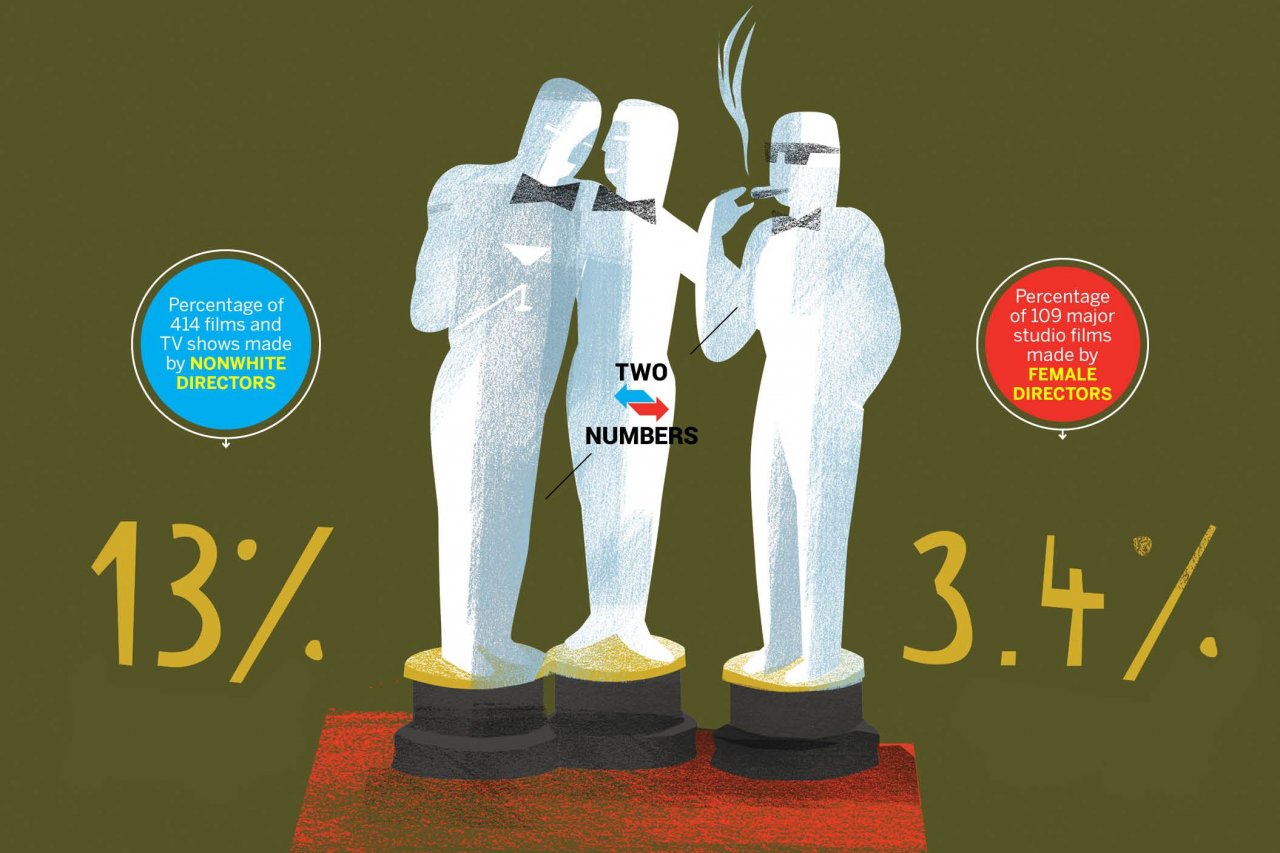For the past two years, the list of Academy Awards nominees has been whiter than Chris Christie in a blizzard. This year, the lack of diversity spawned the viral #OscarsSoWhite hashtag, and celebrities including Spike Lee and Will Smith have publicly spoken out against attending the 2016 ceremony. Now, a study from the University of Southern California's Annenberg School for Communication and Journalism titled "Inclusion or Invisibility?" confirms that the backlash isn't just driven by hype.
The study drew from diversity statistics across film, broadcast, cable and streaming for movies released theatrically in 2014 and TV shows airing from September 2014 to August 2015. The data revealed that people of color directed just 13 percent of the 414 films and television shows studied. For women in the industry, the numbers were even worse, as the study found that women directed a mere 3.4 percent of the 109 major motion pictures that studios released in 2014. Of those directors, just two (not 2 percent) were black women: Selma's Ava DuVernay and Amma Asante, the Ghanaian-British director of Belle.
The statistics for minorities in front of the camera aren't much better: Only 28.3 percent of all speaking characters across the studied media were from underrepresented racial and ethnic groups. In the words of the study's six authors, Hollywood remains a straight, white boys' club.
The second-act twist here is that excluding minorities and women from the film industry may hurt its bottom line. A 2015 study by the Ralph J. Bunche Center for African American Studies at the University of California, Los Angeles, looked at 163 films released in 2013. Those movies with a cast made up of 21 to 30 percent minority actors brought in an average of $143.3 million each at the box office, while films with casts that had less than 10 percent minority actors averaged only $53.2 million.
The problem of misrepresentation in Hollywood is deeply ingrained, but the USC study suggests that one way to promote diversity on screen would be for studios to hire more women and minorities behind the camera. Researchers found that films directed by women boasted 5.4 percent more female characters than those directed by men. Likewise, films made by directors from racial and ethnic minority groups statistically increased the percentage of minority speaking characters to 43.7 percent, up from 26.2 percent in films by white directors. Now if Hollywood could just address its high percentage of bad remakes.




















